As pet owners, we strive to provide our dogs with a well-balanced diet that meets their nutritional needs. One question that often arises is whether dogs can eat fish.
Fish is a popular protein source in many human diets, but is it safe and beneficial for dogs as well?
In this blog post, we will explore the topic of dogs and fish, delving into the potential benefits, risks, and best practices for feeding fish to dogs.
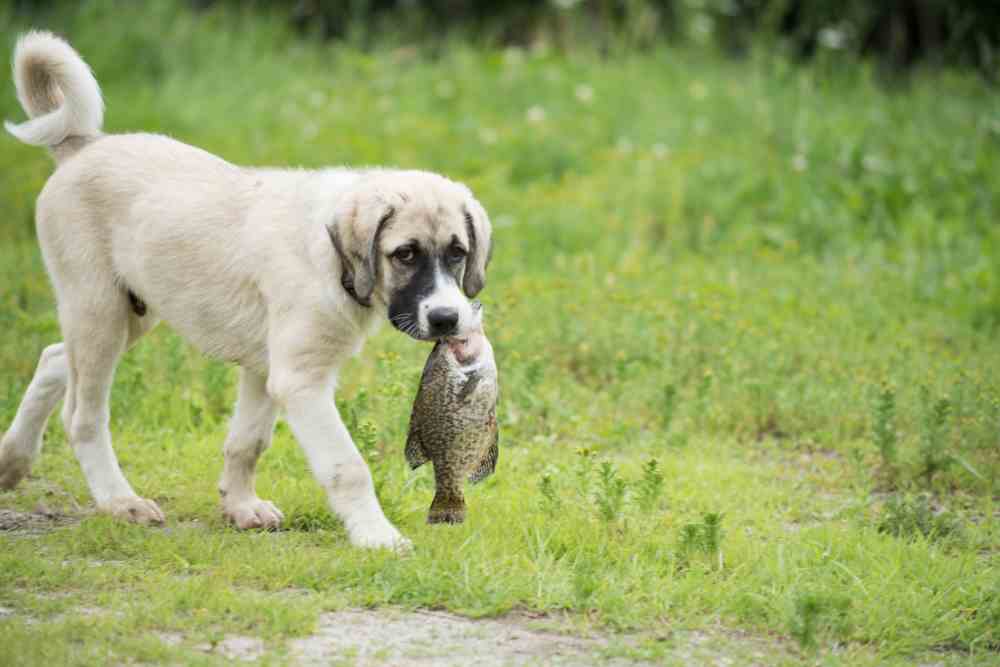
Can Dogs Eat Fish | The Benefits of Feeding Fish to Dogs
Yes dogs can eat fish. Fish can offer several health benefits to dogs when incorporated into their diet.
It is a rich source of high-quality protein, omega-3 fatty acids, and essential minerals such as calcium, phosphorus, and selenium.
These nutrients play a vital role in supporting a dog’s overall health and well-being.
Omega-3 fatty acids, in particular, are known for their anti-inflammatory properties, which can help improve skin and coat health, promote joint health, and support cognitive function in dogs.
10 Types of Fish Dogs Like to Eat
1. Salmon

Dogs can enjoy cooked or raw salmon, which is a great source of omega-3 fatty acids that are beneficial for their skin, coat, and joint health.
However, be sure to remove all the bones before feeding it to your dog to prevent choking hazards.
2. Tuna

Tuna is another fish that dogs can eat, but it should be given in moderation. Too much tuna can lead to mercury poisoning in dogs.
Additionally, avoid giving them canned tuna in oil or with added salt, as it can be harmful to their health.
3. Whitefish
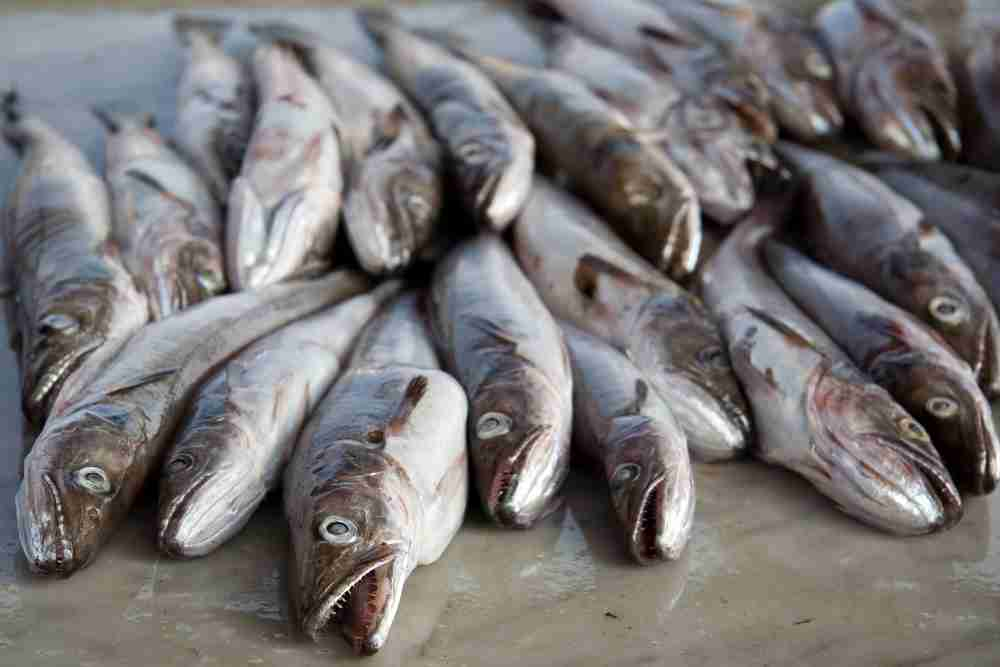
Whitefish, such as cod, haddock, and halibut, can be a good source of protein for dogs.
These types of fish are usually low in fat and easily digestible, making them a healthy option for dogs with sensitive stomachs.
4. Sardines
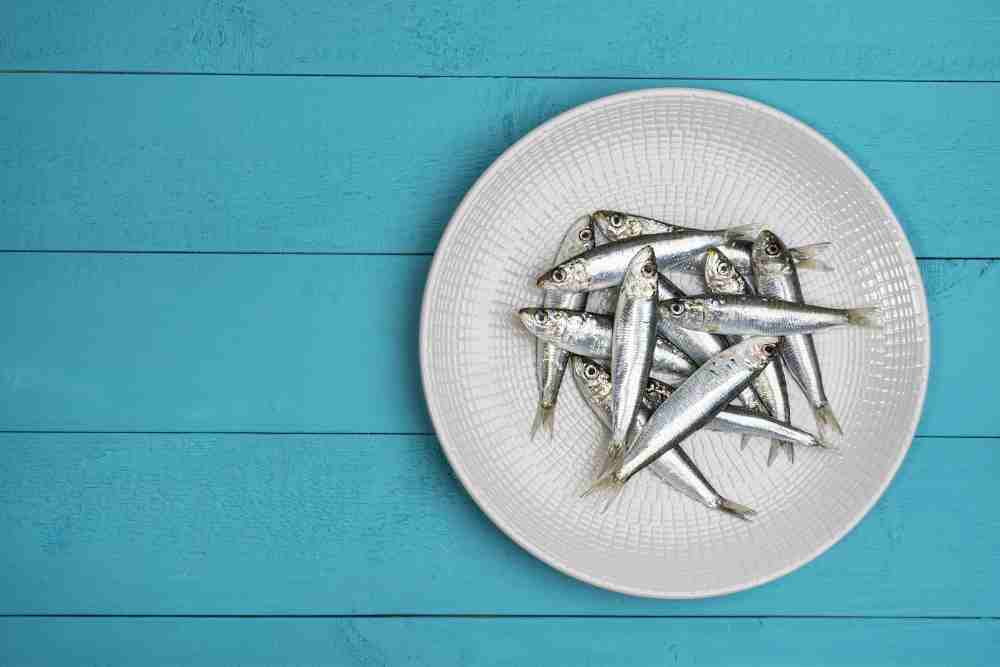
Sardines are packed with essential nutrients like omega-3 fatty acids, calcium, and vitamin D, which can be beneficial for your dog’s overall health.
They are usually available in canned form, but make sure to choose sardines packed in water or olive oil rather than those with added salt or spices.
5. Trout
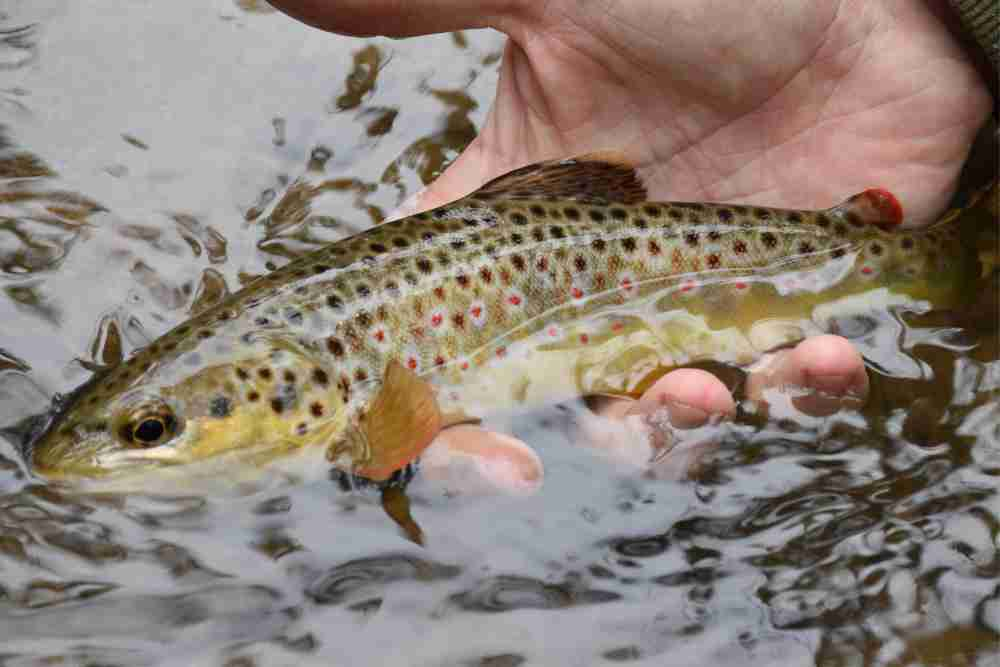
Trout is a type of freshwater fish that is safe for dogs to eat. It is high in protein and contains omega-3 fatty acids, which can help improve your dog’s skin and coat health.
6. Flounder
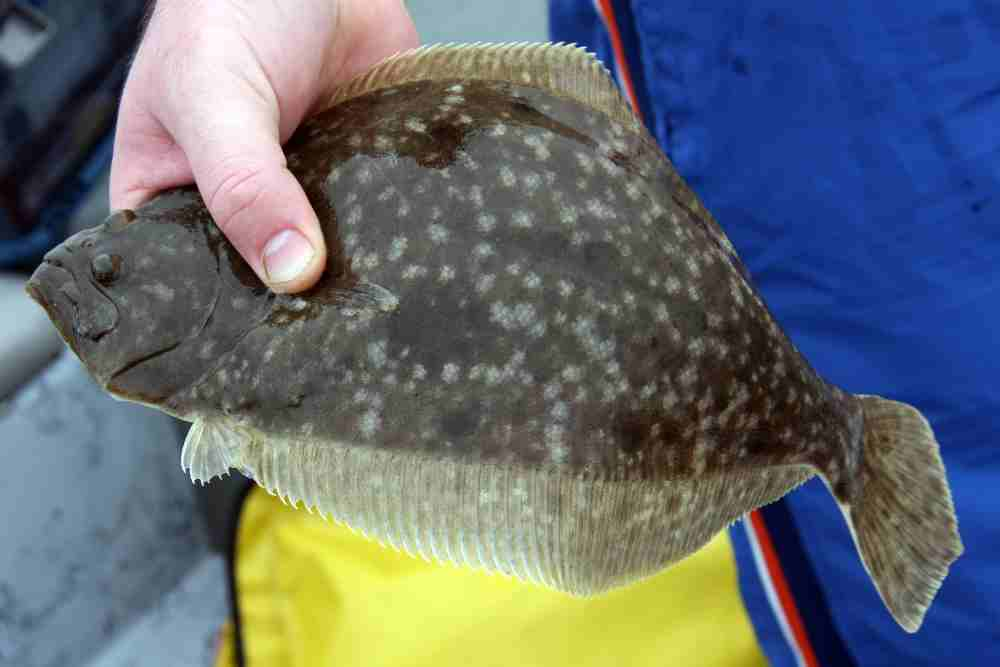
Flounder is a lean fish that is low in fat and can be a good source of protein for dogs.
It is usually easy to digest, making it a suitable option for dogs with sensitive stomachs.
7. Pollock
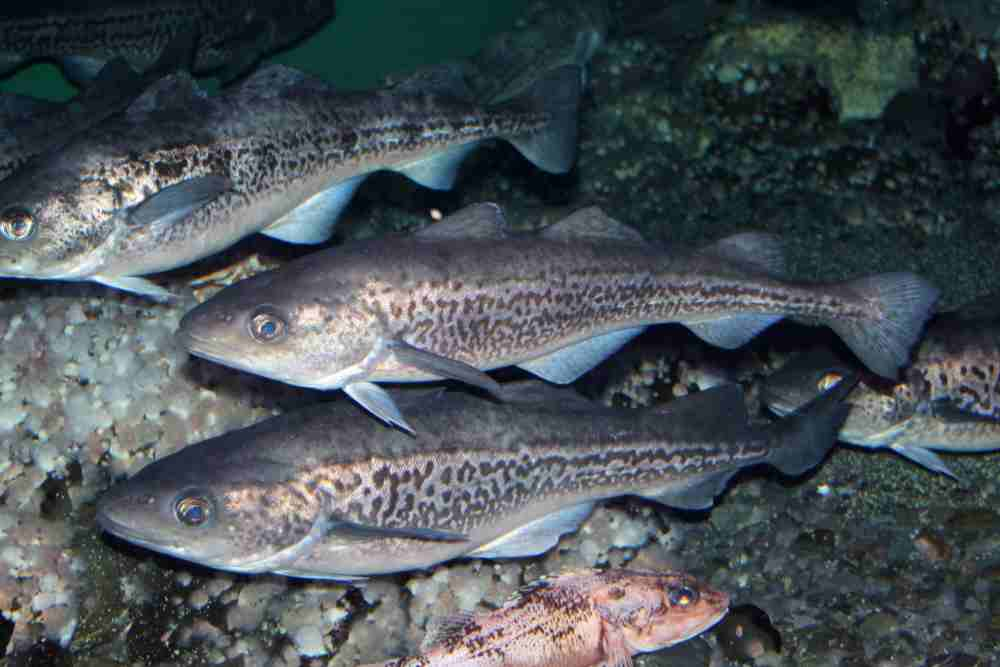
Pollock is a type of whitefish that is often used in fish-based dog foods. It is a good source of protein and contains omega-3 fatty acids, which can promote healthy skin and coat in dogs.
8. Herring

Herring is safe for dogs to eat and can be a good source of omega-3 fatty acids, protein, and other essential nutrients.
However, like with any fish, it’s important to remove all bones before feeding herring to your dog to prevent choking hazards.
9. Catfish
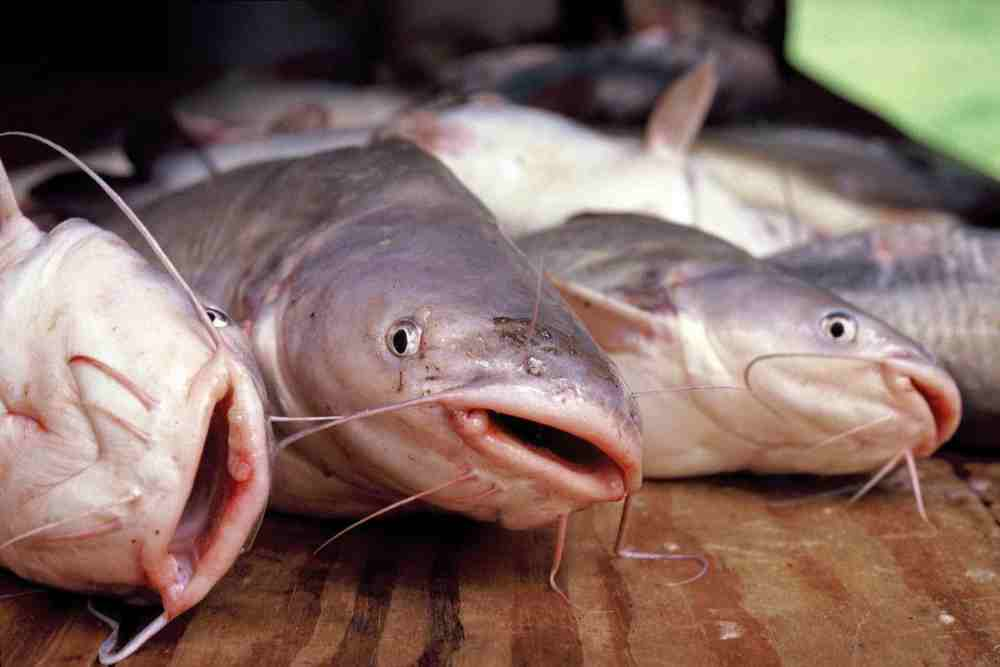
Catfish is another type of fish that dogs can eat. It is rich in protein and can be a good addition to your dog’s diet.
However, be sure to remove all the bones before feeding it to your dog to avoid any choking hazards.
As with any new food, it’s important to introduce fish gradually into your dog’s diet and monitor for any signs of adverse reactions.
10. Tilapia
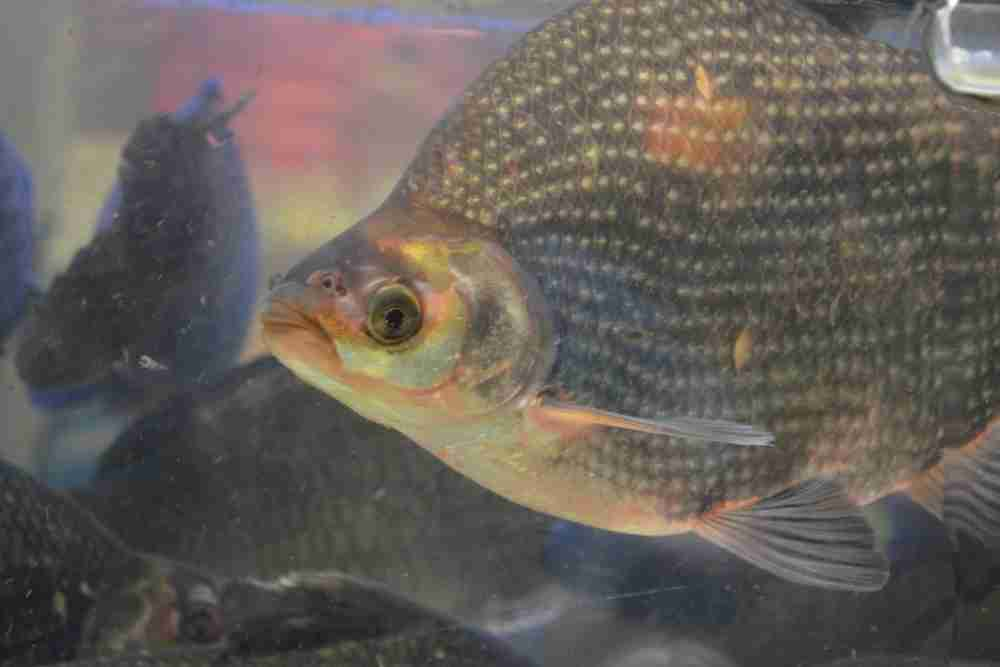
Tilapia is not toxic to dogs, but it may not be the best option due to its low omega-3 fatty acid content compared to other types of fish.
Tilapia is also known to be a type of fish that is often farmed and may contain contaminants.
Fish Shouldn’t Your Dog Eat
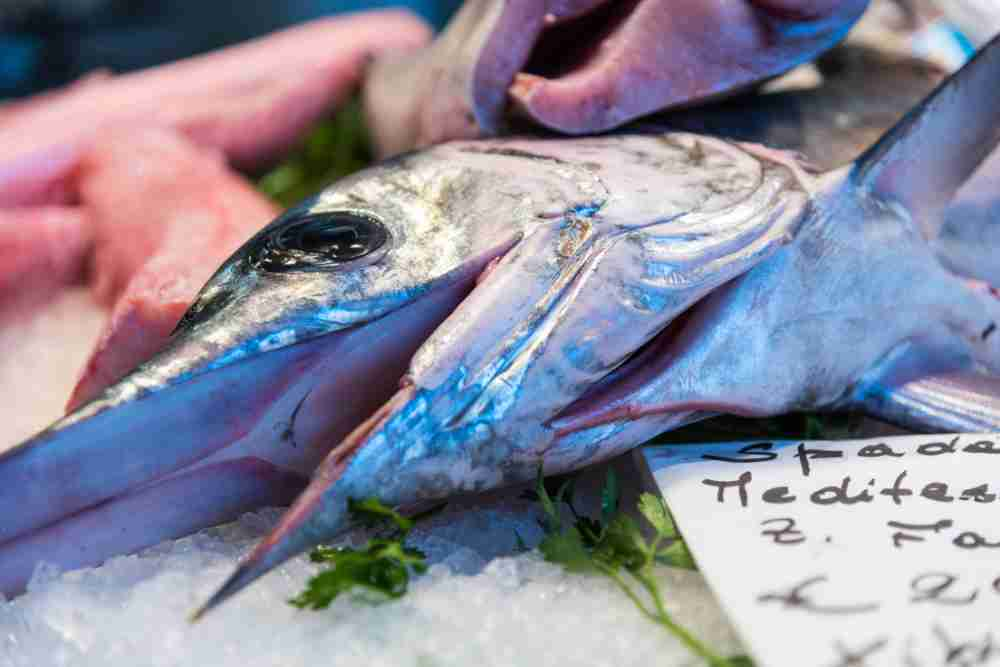
Some types of fish that are known to be high in mercury, such swordfish, and shark, should be avoided as regular dietary options for dogs.
These fish can accumulate high levels of mercury, which can be toxic to dogs and cause health issues over time.
It’s best to choose fish that are low in mercury and safe for dogs to eat, and always consult with
6 Potential Health Concerns and Risks
Feeding fish to dogs can offer various health benefits, but it is important to be aware of potential risks.
As a responsible pet owner, it’s crucial to understand the possible hazards associated with serving fish to your furry friend.
Here are six potential risks of feeding fish to your dog and provide tips on how to safely incorporate fish into your dog’s diet.
1. Choking Hazard: Bones in Fish
Fish bones can pose a choking hazard to dogs. Dogs may accidentally swallow small bones or splinters while eating fish, which can cause blockages in their digestive tract or even puncture their internal organs.
To mitigate this risk, always ensure that the fish fed to your dog is thoroughly checked for bones and is boneless.
Avoid feeding fish with small or sharp bones, such as those found in fish like trout or mackerel, to prevent choking hazards.
2. Risk of Food Poisoning from Raw Fish
Feeding raw fish to dogs can pose a risk of food poisoning. Raw fish may contain harmful bacteria or parasites, such as salmonella or listeria, which can cause foodborne illnesses in dogs.
To prevent food poisoning, always thoroughly cook fish before feeding it to your dog.
Avoid feeding raw or undercooked fish to minimize the risk of bacterial contamination.
3. Possible Allergic Reactions to Fish
Just like humans, dogs can also develop allergies to fish or certain types of fish.
Allergic reactions in dogs can manifest as itching, vomiting, diarrhea, or other digestive issues.
4. Overfeeding and Imbalanced Diet
While fish can provide several health benefits, overfeeding can lead to an imbalanced diet for your dog.
Fish should be fed as part of a balanced and varied diet, and it should not be the sole source of nutrition.
Overfeeding fish can result in an imbalance of nutrients, such as excessive intake of omega-3 fatty acids, which can cause health issues in dogs.
5. Contaminants in Fish
Fish can sometimes contain contaminants, such as heavy metals or environmental pollutants, which can accumulate in their tissues.
These contaminants can pose health risks to dogs when consumed over time.
To minimize this risk, choose fish species that are known to be low in mercury and other contaminants.
Avoid feeding fish that are caught in polluted waters or are known to be high in contaminants, such as large predatory fish like shark or swordfish.
6. Fish Parasite Transmission
Fish parasites can be transferred to dogs through adding fish to their diet, especially if the fish is raw or undercooked.
Fish parasites, such as tapeworms or roundworms, can be present in fish and can cause health issues in dogs when ingested.
This is why it’s important to thoroughly cook fish before feeding it to your dog to kill any potential parasites that may be present.
Feeding your dog properly cooked fish from a trusted source can help minimize the risk of parasite transmission and keep your dog healthy.
Ways of Fish as a Food Recommended & not Recommended for Dog
Raw Fish
Feeding raw fish to dogs is not recommended, as it may contain harmful bacteria or parasites that can cause food poisoning and digestion issues in dogs.
Fish Sticks
Fish sticks are often processed and may contain added salt, preservatives, and other unhealthy ingredients that may not be suitable for dogs.
It’s best to avoid feeding fish sticks to dogs as they may not provide the nutritional benefits that fresh, cooked fish can offer.
Fried Fish
It is not recommended to feed dogs fried fish. Fried fish is usually cooked in oil, which can be high in unhealthy fats and may cause digestive upset in dogs.
Additionally, the breading used in fried fish can contain added salt, spices, and other ingredients that may not be safe for dogs to consume.
Fish Oil
Fish oil can be beneficial for dogs as it is a good source of omega-3 fatty acids, which can promote healthy skin, coat, and joints.
However, it’s important to consult with your veterinarian before adding fish oil or any other supplements to your dog’s diet to ensure the proper dosage and avoid potential side effects.
Fish Balls
Fish balls, which are often processed and may contain other ingredients, such as fillers or preservatives, may not be suitable for dogs.
Parts of Fish Body Dogs Prefer and Avoid to Eat
Fish Skin
While some dogs may enjoy eating fish skin, it can be difficult to digest and may cause gastrointestinal issues in some dogs.
Fish skin can also be high in fat, which may not be ideal for dogs with certain health conditions or dietary restrictions. It’s best to remove fish skin before feeding fish to your dog.
Fish Bones
Fish bones, especially small and sharp ones, can pose a choking hazard and may cause injury or damage to a dog’s digestive tract.
It’s important to always remove fish bones before feeding fish to your dog to prevent any potential risks.
Fish Heads
Fish heads may contain small bones and can pose a choking hazard to dogs. It’s best to avoid feeding fish heads to dogs to prevent any potential risks.
It’s safer to stick to boneless fish fillets when feeding fish to your dog.
Fish Scales
Fish scales are not toxic to dogs, but they are difficult to digest and may cause gastrointestinal discomfort.
It’s best to remove fish scales before feeding fish to your dog to prevent any potential issues.
Fish Fillet
Fish fillets, when properly cooked and boneless, can be a good source of protein and omega-3 fatty acids for dogs.
However, it’s important to ensure that the fish is thoroughly cooked to kill any potential parasites or bacteria, and to remove all bones before feeding fish fillet to your dog.
It’s safer to stick to boneless fish fillets when feeding fish to your dog to avoid potential risks.
Fish Eggs or Roe
Fish roe, also known as fish eggs, can be high in fat and may not be suitable for dogs with certain health conditions or dietary restrictions.
Fish eggs, also known as fish roe, are not toxic to dogs, but they are high in fat and may not be suitable for dogs with certain health conditions or dietary restrictions.
It’s best to feed fish eggs to dogs in moderation and as an occasional treat, and to consult with your veterinarian before adding them to your dog’s diet.
Fish Guts
Fish guts, also known as fish innards, may contain parts that are difficult to digest and may cause gastrointestinal issues in dogs.
It’s best to avoid feeding fish guts to dogs to prevent any potential risks.
Fish Tails
Fish tails, like other fish bones, can pose a choking hazard and may cause injury or damage to a dog’s digestive tract.
It’s important to always remove fish tails before feeding fish to your dog to prevent any potential risks.
FAQs
Are fish bones safe for dogs to eat?
Fish bones can pose a choking hazard or cause internal injuries in dogs.
Therefore, it is important to ensure that fish fed to dogs is boneless and thoroughly checked for any hidden bones to avoid any potential risks.
Can puppies or pregnant dogs eat fish?
Puppies and pregnant dogs can eat fish, but it’s important to do so in moderation and with caution.
Pregnant dogs may benefit from the omega-3 fatty acids found in fish, but it’s best to consult with your veterinarian before adding fish to their diet.
How much fish should dogs eat?
The amount of fish a dog can eat depends on their size, age, and overall health.
As a general guideline, fish should make up a small portion of a dog’s overall balanced diet, typically no more than 10% of their total food intake.
Can dogs eat fish food?
Fish food is formulated specifically for fish and may not provide the necessary nutrition for dogs. It’s not recommended to feed dogs fish food as their primary source of nutrition.
Dogs should have a balanced and complete diet that meets their specific dietary requirements.
Can dogs eat fish everyday?
Feeding fish every day may result in an unbalanced diet and potentially cause nutritional imbalances over time.
In conclusion, fish can offer several health benefits to dogs when fed in appropriate amounts and prepared safely.
It is important to choose fish species that are low in mercury, cook the fish thoroughly, and ensure it is boneless before feeding it to dogs.
However, it is also important to be aware of potential risks, such as fish bones posing a choking hazard and the possibility of fish allergies in dogs.
